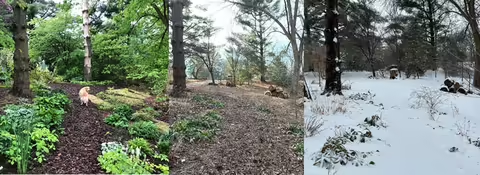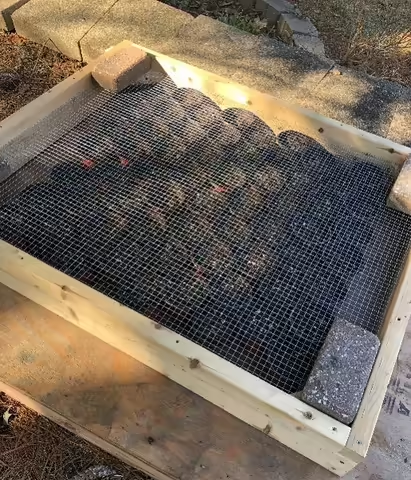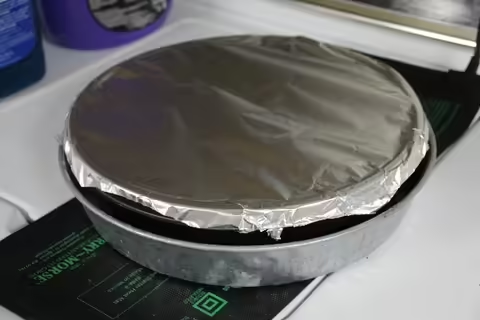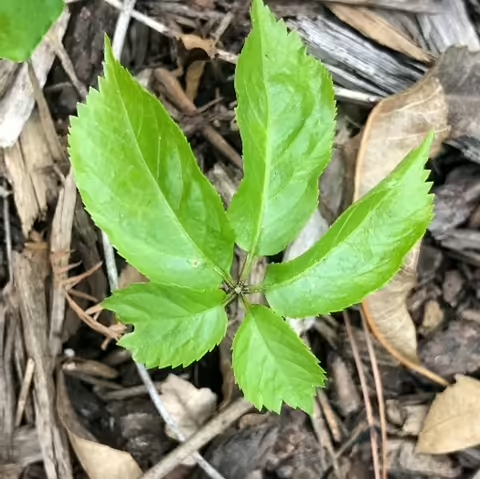How perfect for Punxsutawney Phil to predict six more weeks of winter on the day when snow was falling heavily in the St Louis Metropolitan. School would have been cancelled when and where I grew up in Indiana on a day like that. But because of COVID-19, snow days for students are coming to be a thing of the past with our increasing ability to switch rapidly to remote learning. Remembering my growing up in the 60s and 70s, one of the local banks maintained a phone service that provided the time and temperature, plus any announcements of a school delay or closing. There was no internet, so my brother and I would dial the number repeatedly until we got a ring rather than a busy signal, then wait with anticipation to hear whether our day would be one of freedom with friends. Phones used to have an actual dial, so it was tedious work to call repeatedly after getting a busy signal because every other kid in the county was calling too.
When I can’t be out gardening, my mind always turns to the study of new plants for possible trialing, which usually leads to the very enjoyable process of plant sourcing and acquisition. But sometimes you just can’t find a plant you are looking for or others keep beating you to it. Seeds are a nice alternative, plus it is usually cheaper if you want more than one plant. Most temperate perennial seed have a stratification (warm and/or cold treatment) requirement before germination can occur, and its up to the gardener to provide those requirements. Most temperate perennial seed you buy is not stratified because it keeps longer in the unstratified state. Once a cold treatment (~34-41°F) for example has been met, the seed will lose viability if not kept chilled or planted in suitable growing conditions.
Over the years, I have grown a lot of temperate perennial seed that varied in their needs for breaking dormancy. Many just need simple dry/cold treatment for a month or two, and in that case the desired number of seed (or the whole packet if you need that much) can be placed in a sealable bag in the refrigerator for the required amount of time…the sealable plastic bag or storage container prevents dehydration of the seed. If I am really on top of things, I just plant in the fall and let Mother Nature provide the chilling. I have some really astute squirrels though, so I tend to plant seed in pots and leave them outside for the winter with a frame of hardware cloth over the top for protection. Once they grow to transplant size, I move them to their intended site. Some seed need a warm dark period before a cold moist period. In that case, a grow mat for heat and aluminum foil over the pot to block light works, then it can go outside for the winter if you time it right, or the whole pot can go in the refrigerator.
American ginseng seed (Panax quinquefolius) as an exception is commonly available pre-stratified because it requires a full year of cold/moist stratification, creating a market for growers like me who don’t want to wait that long by doing it themselves. But much like pawpaw (Asimina triloba) seed, the American ginseng seed should never be allowed to dry out and needs to be planted as soon as possible following stratification.
I recently found a seed source for downy lobelia (L. puberula) and the seed is reported to need 60 days of moist, cold stratification. Since I am running a bit late for Mother Nature to reliably provide my chilling needs, my plan is to use the refrigerator. Normally, I would just place larger seed between moist paper towel or moist sand in a sealable bag, but Lobelia seed is like dust, so I plan to sow the seed on the surface of a small pot of moist sand. The whole pot will go in a plastic bag to retain the moisture before going into the refrigerator for a few months. If all works as it should, the seed will germinate once I bring the pot out of the refrigerator and expose it to light and warmth.



